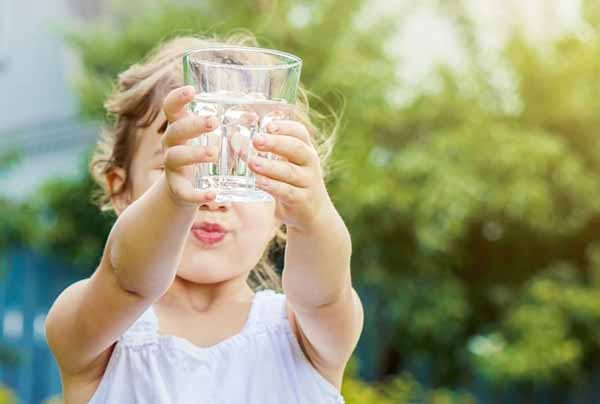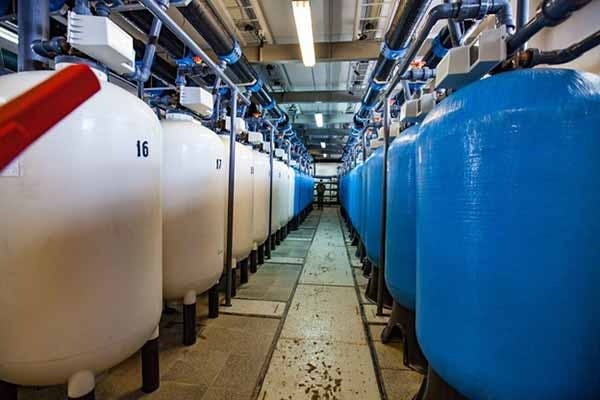July 2022
Chlorination in City Water: Important Information You Should Know
When you think of chlorination in city water, your mind may automatically think of municipal swimming pools. You might not realize that the household water you use to drink, cook, clean, and bathe is chlorinated too.
If you receive water from your city's water supply, the water feeding into your home has likely undergone a large-scale chlorination process.
However, before you become alarmed, note that although there is chlorine in tap water, there’s far less chlorine in the water coming out of your faucet than you would find in a swimming pool.
Chlorination in city water is vital for different reasons. For example, adding chlorine to our water supplies ensures we have clean drinking water so we don’t come down with waterborne diseases.
If you're interested in understanding water chlorination, this article will answer your questions. We'll explain why it's necessary, its effect on water quality, chlorination methods, and the health risks that may be involved.
What Is Chlorination in City Water?
So what exactly does it mean to have chlorination in city water? Water chlorination is a specific process involving adding chlorine to drinking water to kill bacteria, parasites, and viruses such as Campylobacter, norovirus, Salmonella, and some waterborne diseases. Adding chlorine to water prevents outbreaks of these viruses and ensures the population doesn't become ill from their drinking water.
According to data in the U.S., chloramine and chlorine are among the effective disinfectants most often used in public water systems. Chlorination in city water is common practice and different chlorine methods are used in various U.S. cities.
It's commonly believed that drinking water with small doses of chlorine doesn't cause adverse health effects. However, some studies surrounding the use of chlorine in drinking water have shown the chlorination process may not be as harmless as previously believed.
If you're curious about whether or not you have a disinfectant in your water and what type it is, you can consult a copy of your utility's Consumer Confidence Report.
Why Is Chlorine Added to City Water Supplies?
Chlorine is added to city water to eliminate pathogens and microorganisms to create safe drinking water — essentially, it’s a public health service. Public water supplies originate from different sources. Some of these water sources are more contaminated than others.
The contaminants found naturally in groundwater travel through pipes and into households. When the water isn’t treated at a water treatment plant with chlorine, chloramine, and other chemicals, people can become ill from waterborne diseases like typhoid and cholera.
However, if levels of chlorine exceed safe amounts in drinking water sources, you could also become sick.
What Are the Warning Signs of High Chlorine Levels in Tap Water?
Despite the fact that chlorine is an effective disinfectant, you may want to ensure there are no adverse health effects of too much chlorine in your water.
There are a few warning signs you can look out for:
- You begin feeling ill: If you feel nauseous or experience vomiting or diarrhea, these are all signs you could be ingesting too much chlorine. Should you continue to drink chlorinated water with too much chlorine, you could become very sick.
- Your water smells like bleach or tastes like pool water: The drinking water in your home uses far lower chlorine levels than what’s found in swimming pool water. If your tap water smells like bleach or tastes like pool water, there's likely too much chlorine in it. Regular tap water should have no noticeable smell or taste after it’s been through a chlorination process.
- You begin experiencing dry, itchy, or irritated skin: Often, one of the first signs that demonstrate you might have high chlorine levels is that you start experiencing a change in your skin condition after bathing or showering. Of course, changes in skin condition can be caused by factors other than the level of chlorine in your water.
If you suspect that you have elevated chlorine levels in your water, you may want to speak with an expert who can assist you with finding a solution. This expert should also assist you with contacting your water treatment facility.
Can Drinking Chlorinated Water Harm You?
In recent years, it's been shown that ingesting chlorine with your tap water can have many adverse health effects. Often many of the health effects will occur because chlorine tends to form trihalomethanes (THMs).
In most instances, THMs will form when chlorine comes into contact with and reacts to tiny organic particles or materials present in water.
Though most commonly associated with excess chlorine consumption due to accidental ingestion, the following are some of the more harmful effects of chlorine water, sometimes referred to as chlorine poisoning:
- Damage to your lungs, which includes breathing problems, coughing, or pulmonary edema (fluid in lungs)
- Circulatory system issues that include eye irritation and possible irreparable damage, skin irritation, and pH imbalance
- Digestive issues that include stomach ache, vomiting, or hematochezia (bloody stools)
How Do I Check the Amount of Chlorine in My Tap Water?
Since chlorination in city water is common practice throughout the U.S., you may feel like you want to check the amount of chlorine in your home’s tap water. Whether you prefer to check your household tap water or have your water tested by a professional, a few options are available.
If you choose to have your home water tested by a professional, they’ll collect water samples in your home and forward them to a lab. Once the lab has examined your water, they’ll give you a report that you can use to determine what you need to do to reduce the amount of chlorine in your water.
If you don't want to send your sample to a lab, you can do a DIY at-home water testing project. There are numerous water tests on the market that you can use to determine what’s in your drinking water and if it’s safe. A test solution kit usually includes chemicals you add to a water sample. Then, when compared to a color chart, you'll be able to tell what’s in your water supply.
DPD chlorine testing tablets are also available. These tablets change the water's color, allowing you to compare it to a color chart to determine the compounds present.
Finally, you could use a chlorine test strip. Typically in fewer than five minutes you'll know if you have high or low chlorine levels in your drinking water.
What Is the Maximum Chlorine Level for Drinking Water?
According to the U.S. Environmental Protection Agency (EPA), drinking water with chlorine is considered safe if the chlorine levels are no more than 4 milligrams per liter or four parts per million (ppm).
If the levels are within this range, it's unlikely that harmful effects will occur in humans, domestic animals, and plants. However, you should note that chlorinated water is toxic to aquatic life, fish, reptiles, and amphibians.
Treated water often contains small numbers of contaminants. However, it’s believed that as long as these contaminants remain below the EPA allowable limits, including the limitations they have in place for disinfectants and disinfection byproducts (DBPs), your drinking water is considered safe.
What Are the Methods of Putting Chlorination in City Water?
There are different types of chlorine disinfection for drinking water supplies. The following are a few methods for drinking water disinfection using chlorine.
- Batch disinfection: As the name implies, batch disinfection treats water in batches. This type of disinfection is ideal for holding tanks, cisterns, and emergencies when water is needed immediately. For this treatment, three tanks are typically filled, each containing two to three days' water supply to be treated accordingly.
- Shock chlorination: In most instances, shock chlorination is used when a well has been recently installed, repaired, or temporarily contaminated. Finding a new water source or utilizing a continuous disinfectant system is often recommended if one or two treatments don't clear up bacteriological issues.
- Simple chlorination: Often, simple chlorination is used to disinfect the upper portion of a well casing, a well pump, a drop pipe, a water service line, the pressure tank, and the building water distribution system. Usually, this chlorination method maintains a low level of 1.05-1.76 ounces of chlorine concentrations per liter.
What Can I Do to Change the Taste or Smell of Chlorinated City Water?
Many people complain about the taste and smell of chlorinated water. However, there are a few ways to make chlorinated water more palatable, less of a health hazard, and easier to drink and smell.
- If you don't want to remove the chlorine from your drinking water but want to eliminate the smell, you can place an uncovered pitcher of water in the refrigerator for a few hours. You allow the chlorine smell to leave your drinking water by doing this.
- Use a home filtration system from a reputable company like HomeWater. If you use a water filter system, you can remove chlorine from your water and make it safer to use.
- Use granulated activated carbon filters. These carbon filters will remove the smell and taste of chlorine. You can install these filters at your tap or sink, or shower.
- If you don't want to use this type of filter, you can use a point-of-use filter that attaches to a pitcher.
Chlorination in City Water: The Chemical and Its Effects
Adding chlorine to municipal and city water supplies at treatment plants is necessary because it makes our tap water safe to drink and use for other purposes. In addition, chlorine is one of the best chemicals to disinfect water and ensure no viruses or bacteria survive to make us ill.
However, it's also evident that chlorinated water has a few adverse health effects when present in excess.
That's why it may be best to install a home filtration system from HomeWater. We know how crucial it is to have safe water, which is why our filtration system will ensure you're able to use clean water that doesn't contain as much chlorine.
If you want to install a home filtration system, contact us today and we will answer any questions you may have about filtering your home's water.
Brought to you by homewater.com
All images licensed from Adobe Stock.
Featured Image

